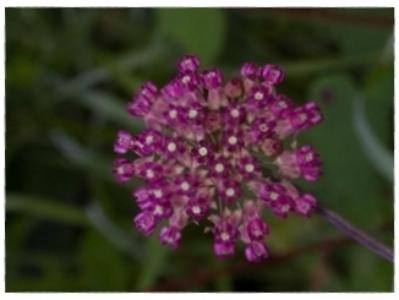Denseflower milkweed
(Asclepias densa)

Description
Asclepias densa, also known as the denseflower milkweed, is a perennial herbaceous plant that belongs to the family Apocynaceae. It is native to the southwestern United States, specifically Arizona, California, Nevada, and Utah. In this article, we will delve deeper into the characteristics, habitat, cultivation, and conservation status of Asclepias densa. Characteristics Asclepias densa is a relatively small plant, with a maximum height of about 1 meter. It has an upright stem that is covered with short hairs and produces a milky sap when damaged. The leaves of A. densa are dark green, lanceolate in shape, and can grow up to 7 centimeters long and 2 centimeters wide. The plant produces small, pink to purple, star-shaped flowers that are arranged in dense clusters at the tips of the stems. The flowers have five petals and a central corona that consists of five hoods surrounding the stigmatic head. The fruit of A. densa is a follicle that contains numerous small, brown, oval-shaped seeds. Habitat Asclepias densa is found in a variety of habitats, including rocky slopes, desert washes, and open woodland. It is adapted to hot, dry conditions and can tolerate a wide range of soil types. A. densa is often found growing in association with other plants, such as creosote bush (Larrea tridentata), brittlebush (Encelia farinosa), and sagebrush (Artemisia tridentata). Its distribution range is relatively limited, as it is only found in the southwestern United States. Cultivation Asclepias densa is a relatively easy plant to grow in the right conditions. Here are some guidelines for cultivating Asclepias densa: Light: A. densa prefers full sun, so choose a location with at least 6 hours of direct sunlight per day. Soil: A. densa is tolerant of a wide range of soil types, but it prefers well-drained soil. If your soil is heavy clay, amend it with sand, perlite, or other materials to improve drainage. Water: A. densa is drought-tolerant and does not require much watering once established. Water deeply once or twice a week during the first growing season to help the roots establish, then reduce watering to once every week or two. Fertilizer: A. densa does not require much fertilizer. If you choose to fertilize, use a balanced fertilizer with an NPK ratio of 10-10-10 or less, and apply according to the manufacturer's instructions. Propagation: A. densa can be propagated from seed or by taking stem cuttings. Seeds should be sown in the fall, as they require a period of cold stratification to germinate. To take stem cuttings, select a healthy stem and cut a 4-6 inch section from the tip. Remove the lower leaves and dip the cut end in rooting hormone. Plant the cutting in a well-draining potting mix and keep it moist until roots develop. Maintenance: A. densa requires very little maintenance once established. Remove any dead or yellowing leaves as needed. In late winter or early spring, cut back the stems to promote bushier growth. By following these guidelines, you can successfully cultivate Asclepias densa in your garden or landscape. Uses Asclepias densa has several uses, both ecological and cultural: Ecological significance: Asclepias densa, like other milkweed species, is an important host plant for the monarch butterfly (Danaus plexippus). The plant's leaves provide food for the caterpillars, which then transform into adult butterflies. By planting A. densa in your garden or landscape, you can support monarch butterfly populations and contribute to their conservation. Native landscaping: Asclepias densa is a native plant that is well adapted to hot and dry conditions. It can be used in native landscaping to create a natural, low-maintenance landscape that supports local wildlife. Medicinal properties: Some members of the Asclepias genus have been used in traditional medicine to treat a variety of ailments, such as snake bites, stomach cramps, and respiratory infections. However, there is limited information on the medicinal properties of A. densa specifically. Ornamental value: Asclepias densa has attractive flowers and foliage, making it a popular choice for ornamental gardens and landscapes. Its pink to purple flowers provide a burst of color in late spring and early summer. Overall, Asclepias densa has both ecological and cultural value, making it a valuable plant to incorporate into your garden or landscape. Conservation status Asclepias densa is classified as a species of "Least Concern" on the International Union for Conservation of Nature (IUCN) Red List. However, like many milkweed species, it is important for the survival of the monarch butterfly (Danaus plexippus), as it is a host plant for the butterfly's larvae. The monarch butterfly population has been in decline in recent years, largely due to habitat loss and the use of pesticides. Therefore, conservation efforts are important to maintain the plant's role in the monarch butterfly's life cycle. Conclusion Asclepias densa is a small but important plant that plays a significant role in the ecosystem. Its adaptability to hot and dry conditions makes it a valuable addition to many gardens and landscapes. As conservation efforts continue, the importance of plants like A. densa in maintaining healthy ecosystems will become increasingly apparent.
Taxonomic tree:







